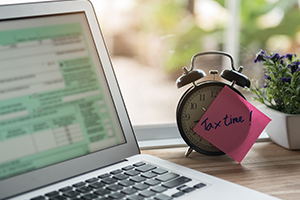
Doesn’t it feel great when the pani puri guy gives you an extrapuriin the end? Or when you get a seat in the metro, even during the busiest hours? These small joys are what make life wonderful! Likewise, tax benefits are one of the most sought-after joys of the investing world. And Equity Linked Savings Schemes (ELSS) can be your source of happiness in this case. Let’s find out how!
What are ELSS mutual funds?
These mutual funds invest in equity and equity-related securities. They function like any other mutual fund and allow you to invest in a lump sum or start an SIP online (Systematic Investment Plan). However, they have one different feature from other mutual funds – a lock-in period of three years.
ELSS funds are often referred to as the tax saver mutual fund under 80C! More on this, along with other advantages of ELSS, has been discussed below.
Benefits of ELSS
ELSS mutual funds can offer several benefits. Let’s see what these are:
- ELSS tax benefit:
You get more tax benefits than one when you invest in ELSS. Firstly, you can claim tax deductions of up to Rs 1.5 lakh every financial year under Section 80C of the Income Tax Act, 1961. This can help you save up to Rs 46,800 in taxes every year.
Secondly, ELSS is an equity fund with a lock-in period of three years. Gains on equity investments held for more than a year are taxed as long term capital gains tax. This is levied at the rate of 10% upon redemption. However, long term gains of up to Rs 1 lakh/year are tax-exempt. So, you will only pay tax if your profits exceed Rs 1 lakh in a financial year. Compared to the short term capital gains tax of 15% levied on gains when you invest in equity for a year or less, this is a win-win situation! Since your gains on ELSS are long term capital gains by default, you will either pay lower taxes or enjoy entirely tax-free returns.
- Inflation-beating returns:
Equity funds are known for generating inflation-beating returns over a long investment horizon. So, you can use ELSS funds to target your long-term goals. Moreover, the lock-in period ensures that you stay invested for at least three years. This, in turn, contributes to better returns with the power of compounding. Therefore, not only do you earn returns on your primary investment but also on the return generated on your investment.
- Short lock-in period:
Circling back to the lock-in period once again, there is yet another advantage of ELSS mutual funds. ELSS has the shortest lock-in period of three years in the group of investments included in Section 80C. Other options like the tax-saving fixed deposit, Public Provident Fund (PPF), National Pension Scheme (NPS), life insurance, etc., have longer tenures before you get to redeem your money.
How to calculate returns on ELSS mutual funds?
An ELSS calculator can help you calculate your returns from ELSS mutual funds. All you need to do is enter the investment amount, the duration of the investment, and other similar information and the calculator will compute the returns for you. You can even modify the values to see how the changes in investment or tenure impact your returns and accordingly make a decision.
Alternatively, you can use this formula too:
Investment Amount (1 + Expected Rate of Returns) ^ Time Horizon
However, since manual calculations can sometimes have errors, you can use an online ELSS calculator to double-check.
When is the best time to invest in ELSS mutual funds?
No matter when you are reading this, the best time to invest in mutual funds like ELSS is now. ELSS saves tax and offers inflation-beating returns. So, the sooner you start, the sooner you stand to benefit from it. This is not a scheme that deserves attention right before the tax filing season. Instead, it can be effectively used to plan for various financial goals. To tackle the volatility associated with equities, you can invest in ELSS through SIPs. As such, you can spread your investment amount throughout the time you have and gain from investing during different market situations.
Summing it up
Equity-linked savings schemes hit the nail on the head with tax deductions, inflation-beating returns, and a relatively lower capital gains tax. So, if you want to invest in equity mutual fundsand enjoy these not-so-little joys of life (read investing), you can consider adding them to your portfolio.
An investor education initiative by Edelweiss Mutual Fund
All Mutual Fund Investors have to go through a onetime KYC process. Investor should deal only with Registered Mutual Fund (RMF). For more info on KYC, RMF and procedure to lodge/redress any complaints, visit -https://www.edelweissmf.com/kyc-norms
MUTUAL FUND INVESTMENTS ARE SUBJECT TO MARKET RISKS, READ ALL SCHEME RELATED DOCUMENTS CAREFULLY
Trending Articles
MUTUAL FUND INVESTMENTS ARE SUBJECT TO MARKET RISKS, READ ALL SCHEME RELATED DOCUMENTS CAREFULLY.















